General recommendations for selection
In order to choose the right one from a huge variety of baking dishes, you should take into account the characteristics you need:
- Volume... How many people do you plan to cook in the purchased baking dish?
- Height... Pies are baked on flat baking trays, muffins are baked in high baking trays, medium ones are suitable for meat, poultry, vegetables.
- additional characteristics... There are non-stick coated ovenware. There is one that keeps you warm. Cooking in an oven with a lid enhances the aroma and juiciness of the dish.
- Price + service life... Cast iron will cost more than silicone, but will also last longer.
- Aesthetics... Ceramic or glass forms are immediately placed on the table, in contrast to inconspicuous aluminum or steel.
- Care process... Not all metal can be washed in the dishwasher, non-stick coating or enamel cannot be scrubbed with an iron brush.
- Environmentally friendly, hypoallergenic... Although all baking dishes undergo quality control, it should be noted that glass is safer than Teflon - when overheated, it does not emit harmful substances.
Material
The equipment of the oven begins to be selected according to the composition. Let's consider the most common heat-resistant materials.
Cast iron
It has been used in cooking for a long time for a reason: the form warms up evenly, retains heat. Thanks to this, meat and fish, vegetable side dishes are very juicy, fragrant... Another advantage is the bottom does not burn, not afraid of contact with metal spoons, forks.
Of cons - a large weight of the brazier, the possibility of rust (cannot be washed in a dishwasher!). If not properly cared for, the absorbed oil forms a dangerous crust that releases carcinogens.
Choice advice: Look for pans with a wall thickness of at least 5 mm, no chips, pits, or bumps on the inside.
Stainless steel
Budget stainless steel dishes best for everyday use: inexpensive, easy to clean (not afraid of corrosion, washable in PMM), weighs little, lasts a long time. The choice of shapes and sizes is huge: from standard sheets to shaped cupcake molds.
Among disadvantages the possibility of burning food, as well as uneven heating: it quickly heats up, it cools down quickly.
Choice advice: pay attention to the quality of the coating, it should be uniform, without scratches, cracks, chips. Fans of dietary dishes are better off giving preference to teflon-coated dishes: they cook in it without oil and fat.
Aluminum
The lightweight and durable metal was originally used to serve meals on board passenger ships, but thanks to its obvious advantages, it soon won the hearts of housewives around the world. Unlike metal or cast iron vessels, stored in aluminum food: no metal taste + bactericidal properties.
Ceramics
Ceramic tableware incredibly good: monochromatic or decorated with intricate patterns, it will decorate not only the kitchen, but also the festive table.The main destiny - extinguishing or languishing. The porous material provides uniform heating and guarantees a delicious, aromatic dinner. Whether it is portioned clay pots or large pan - cooking in them is a pleasure.
Minus only one: if handled carelessly, your favorite fragile oven container can break.
Choice advice: as in the first two, there should be no chips, cracks, scuffs on the surface - initially low-quality dishes will crack at the first heating.
Glass
Main disadvantage glassware - fear of temperature extremes. This affects the cooking process: it is better to reheat the dish together with the oven. Otherwise, heat-resistant glass - ideal material for languishing!
Provides high-quality heating, retains useful substances in the composition of products, saturates the dish with aromas, and is suitable for serving delicious food.
Choice advice: Since the glass is slippery, go for the handle options - getting hot food out will be easier.
Silicone
Ultra-modern silicone molds can easily withstand temperatures from -40 to + 260-300 degrees. That is, they not only bake, but also freeze food in them. They are inexpensive, differ in a rich assortment (from simple forms to fancy ones in the form of flowers, animals, buildings).
Disadvantage in "liquid" - silicone containers do not hold their shape well, therefore they require an additional support in the form of a metal, ceramic, glass plate.
Choice advice: Pay attention to the certification of the cookware, it must be made of food grade material.
To summarize, compare all options according to 3 main characteristics:
| Material | Price range | Life time | Safety | Care |
|---|---|---|---|---|
| Cast iron | Dear | Durable | Accumulated oil is carcinogenic | Gentle care |
| Steel | Middle | Durable | Safe, damaged Teflon is dangerous | Suitable for PMM |
| Aluminum | Budget | Short-lived | Safe | Gentle care |
| Ceramics | Middle | Afraid of blows, falls | Safe | Suitable for PMM |
| Glass | Middle | Afraid of blows, falls | Safe | Suitable for PMM |
| Silicone | Budget | Afraid of sharp objects | May release corrosive substances in some cases | Suitable for PMM |
The form
Cooking different dishes in the oven requires different conditions, and therefore different products.
- For baking, for example, we recommend using flat, low baking trays.
- Meat or poultry is cooked in high, oval, rectangular ones - they contribute to an even flow of heat.
- Round forms are convenient for cakes, pies - in the oven, heating goes from the edges to the center, so the biscuits and filling are baked perfectly.
In addition to standard trays, there are also other types:
- Cocottes... Small portioned bowls with handles. Usually julienne is baked in these. There are also ramekins - smaller cocotte makers (90-120 g) without handles. Suitable for baking breakfasts, desserts.
- Goose makers... Drawn pans with a lid. The best for the oven are cast iron or ceramic with thick sides.
- Braziers... In fact, they resemble goslings, but usually round. Suitable for meat, poultry, vegetables.
- Pots... There are both portioned and large - tagines. The clay base and the presence of the lid help to preserve the taste and juiciness of the products.
Appointment
In order for food cooked in new dishes to meet expectations, you need to decide what exactly you expect from the purchase.
- Cooking meat, poultry, fish in the oven involves uniform heating, preservation of juice: this means you need an oval, round or rectangular brazier with a lid.
- Crispy vegetables require high thermal conductivity, such properties are found in steel. And stews need slow heating - ceramics, glass, cast iron.
- Cookies, gingerbread need air and heat: a flat stainless steel pan is useful.
- The biscuit, on the other hand, must warm up slowly so that it can rise: round metal molds with Teflon are best for the oven.
- Cupcakes are usually thicker - so a metal or silicone mold with a hole in the center will help cook from all sides.
- Serving in portions is served in cocotte makers, carcasses of ducks, rabbits, chickens are cooked in ducklings.
- A steel circle with holes or a special baking stone is suitable for pizza.
- The bread is baked in tall aluminum tins - it is easy to take out of them, after use it is enough to wipe it.
What to consider for different types of ovens?
Whatever manufacturer and type your stove is - gas or electric, this fact affects the use of cookware least of all. It is more important to choose not according to the type of oven, but according to the maximum temperature of use: in glassware you can bake when heated to 300 degrees, as in Teflon. Silicone can withstand up to 260C.
If the oven has a working thermometer and adjustment, there are no restrictions on the use of forms.
Care features
Cooking in the oven is easy, but washing the dishes is real flour. For a quick and easy process, choose Teflon-coated stainless steel trays... It is enough to wipe them with a soft sponge and dishwashing detergent - no burnt food or difficulties with care.
Glass, ceramics, stainless steel are put in the dishwasher - usually machines cope with this difficult task with a bang. The most difficult thing to wash after the oven is cast iron. - it tends to absorb oil, therefore, metal brushes and abrasives are used for cleaning. It is even permissible to grind old pans.
It is impossible to single out one optimal option from the whole variety of oven utensils. To get the best results, always select the braziers and trays for the specific task.

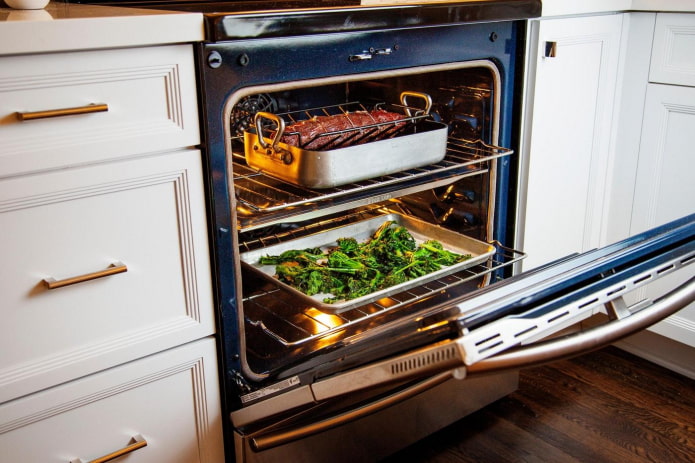
 10 practical tips for arranging a small kitchen in the country
10 practical tips for arranging a small kitchen in the country
 12 simple ideas for a small garden that will make it visually spacious
12 simple ideas for a small garden that will make it visually spacious
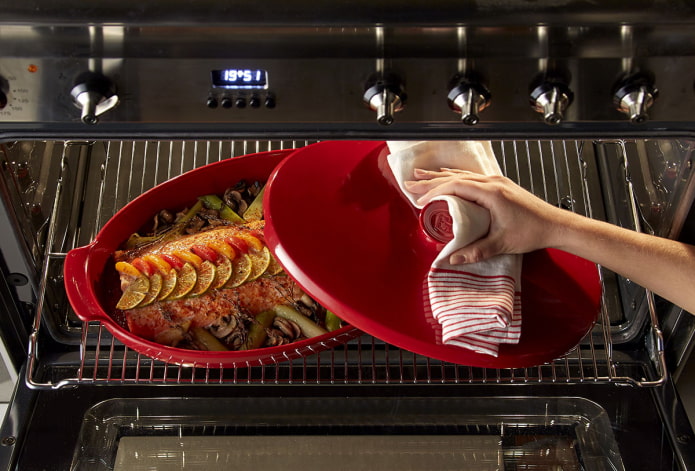
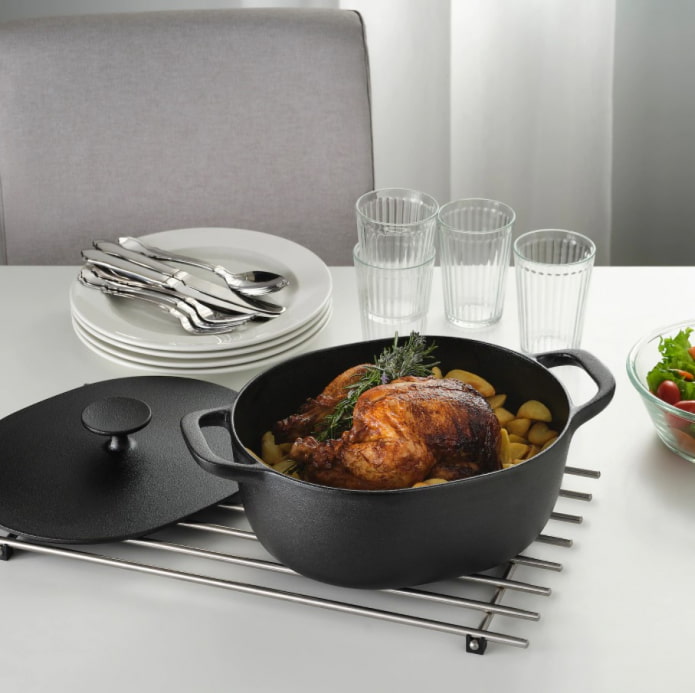

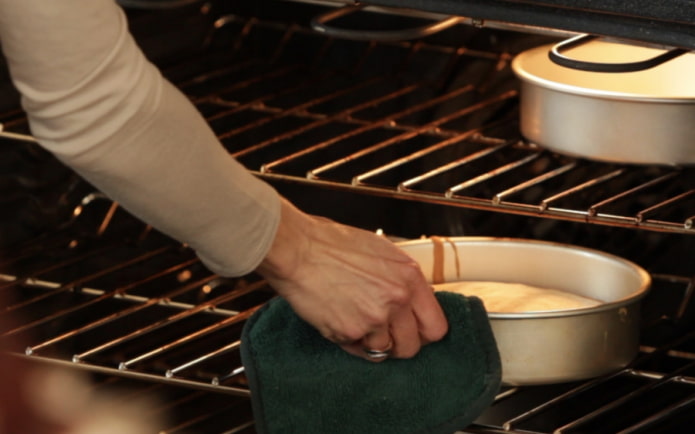
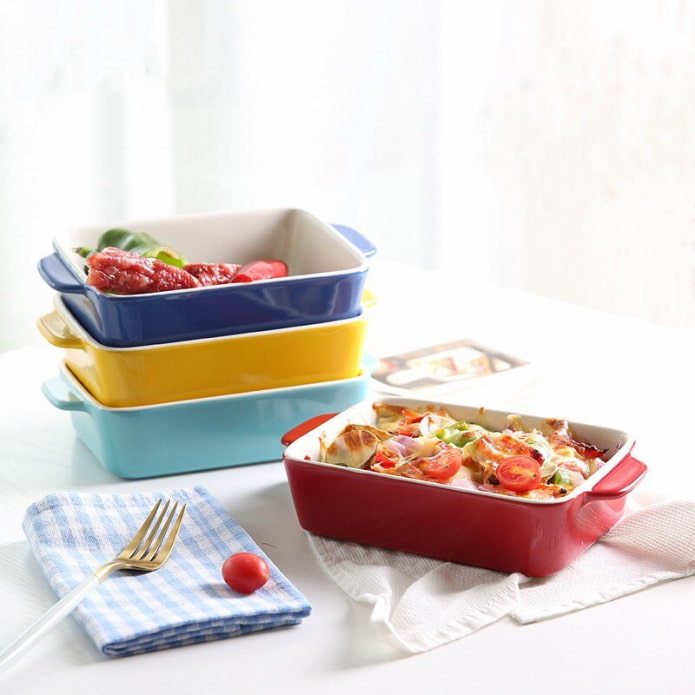
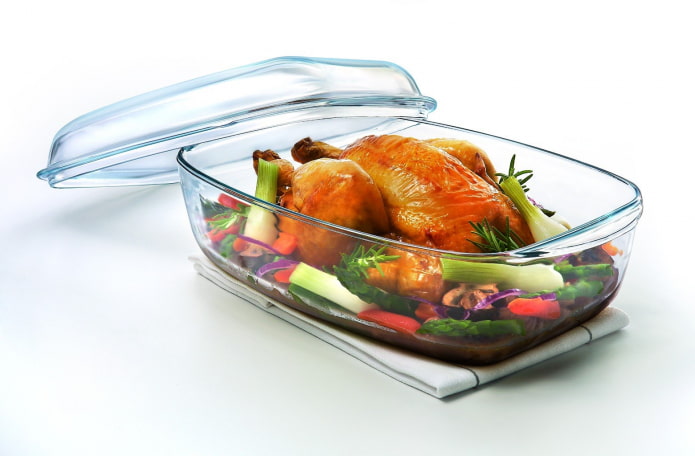
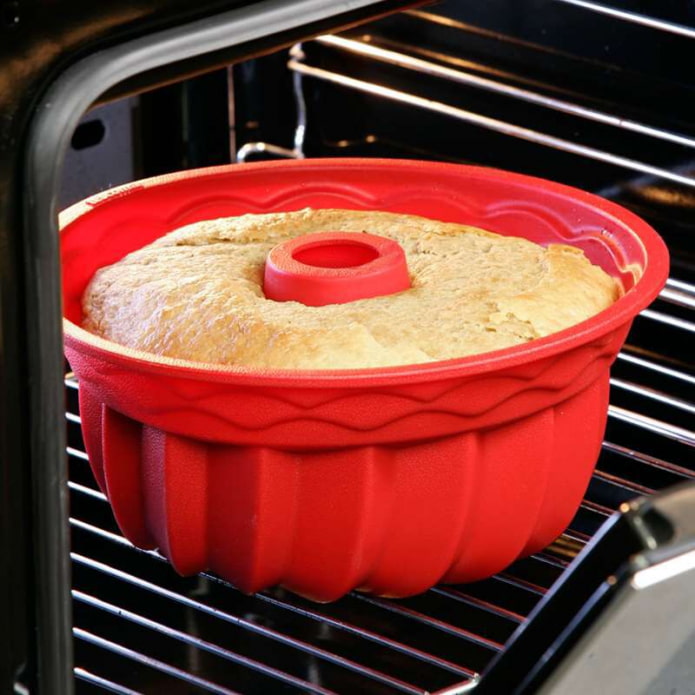
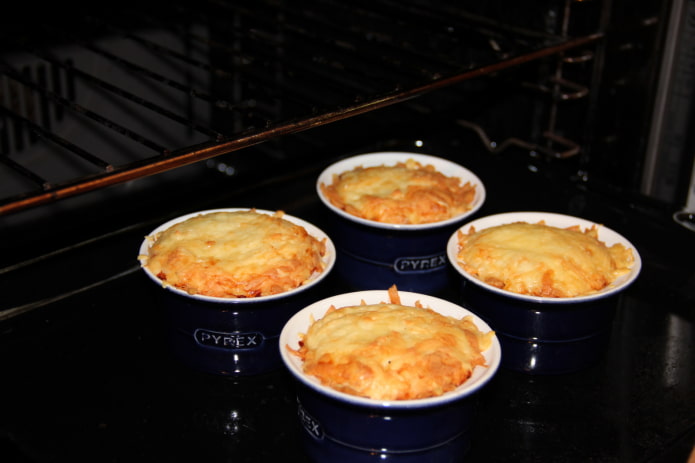
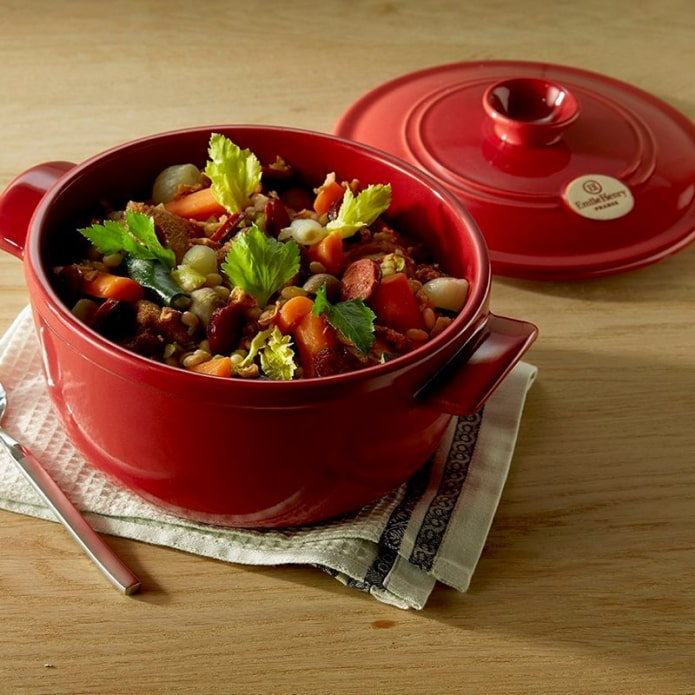
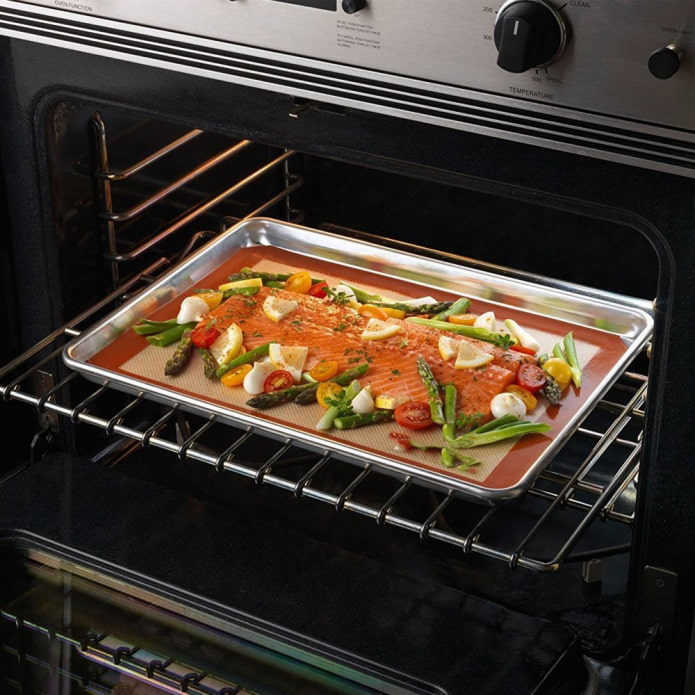
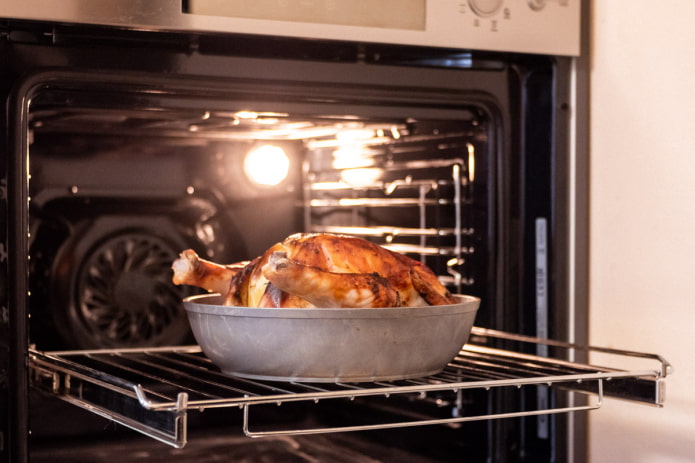
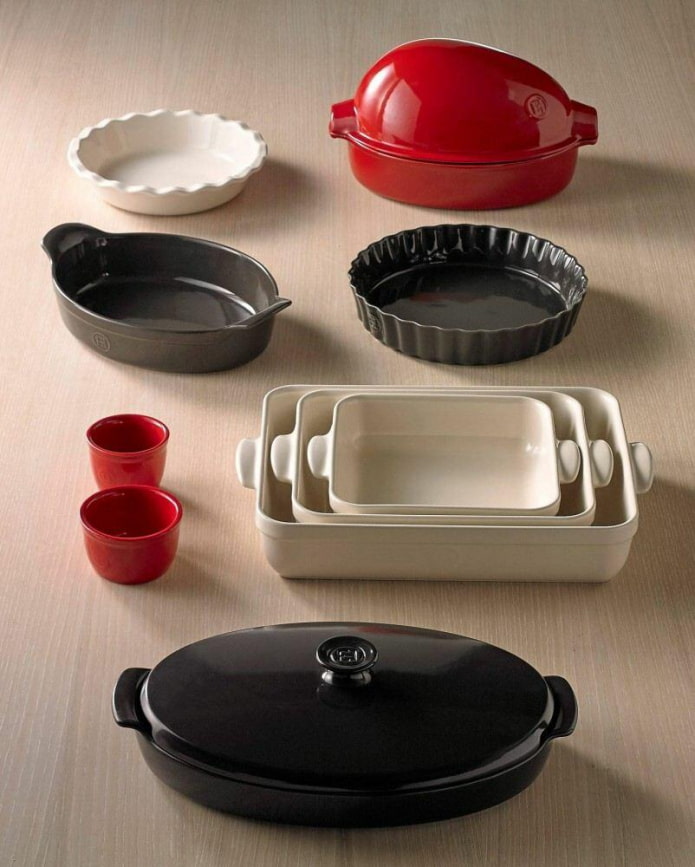
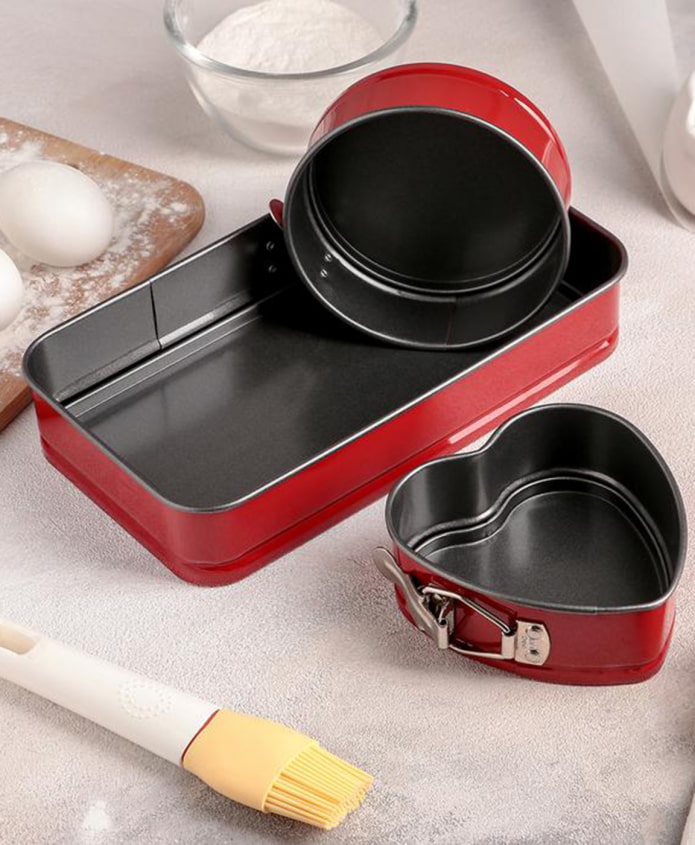

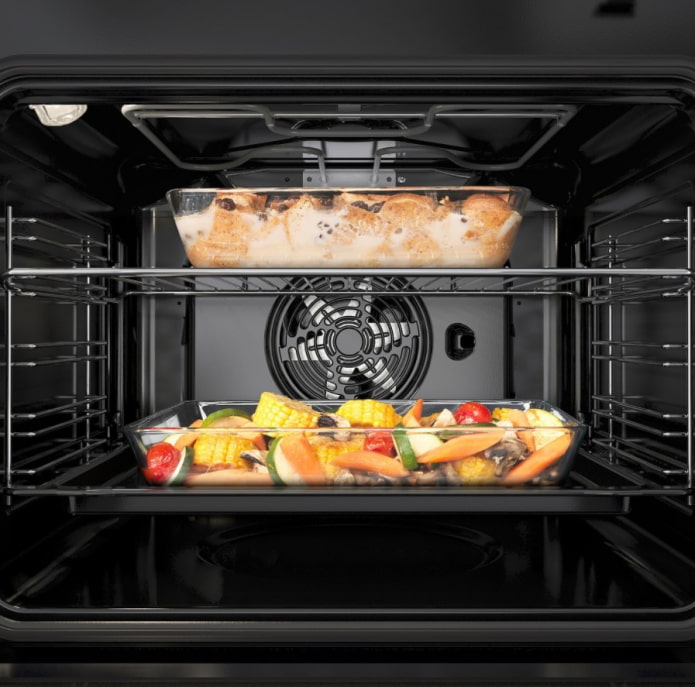
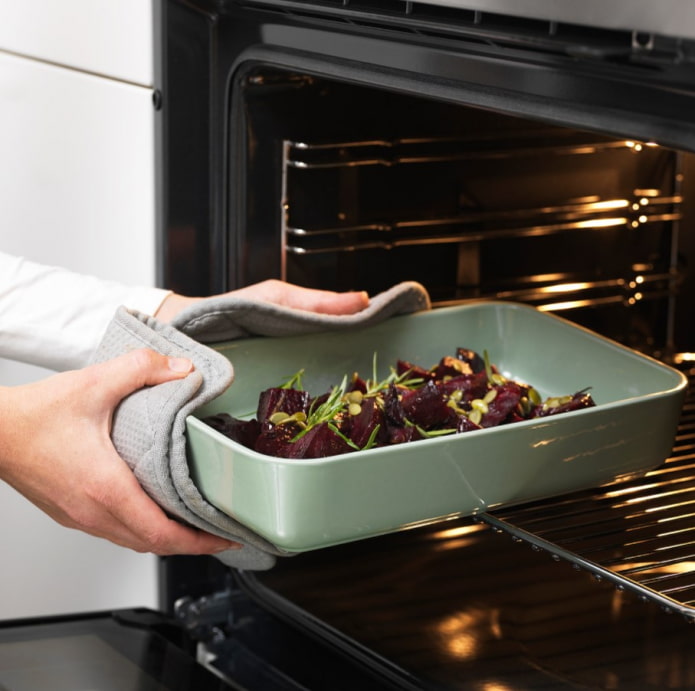
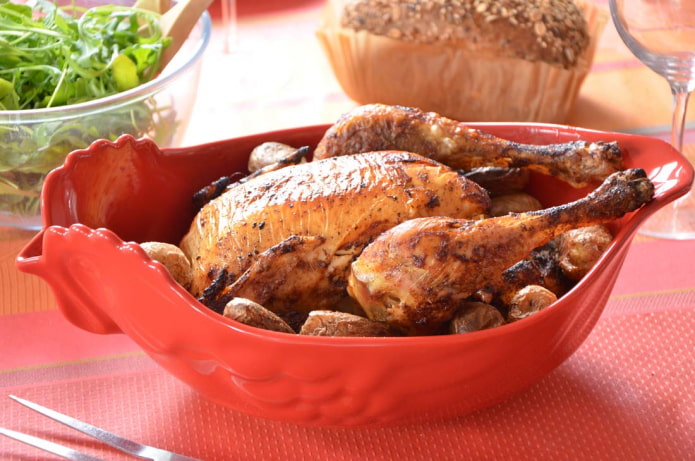

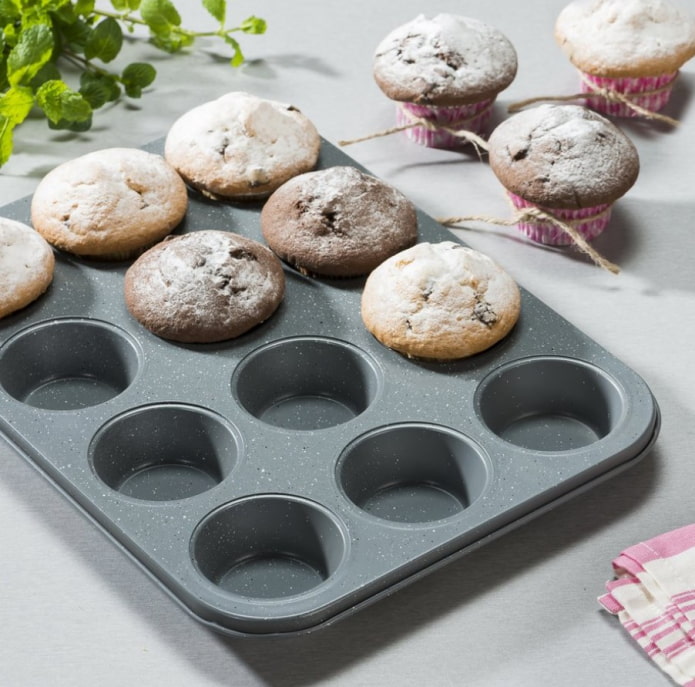
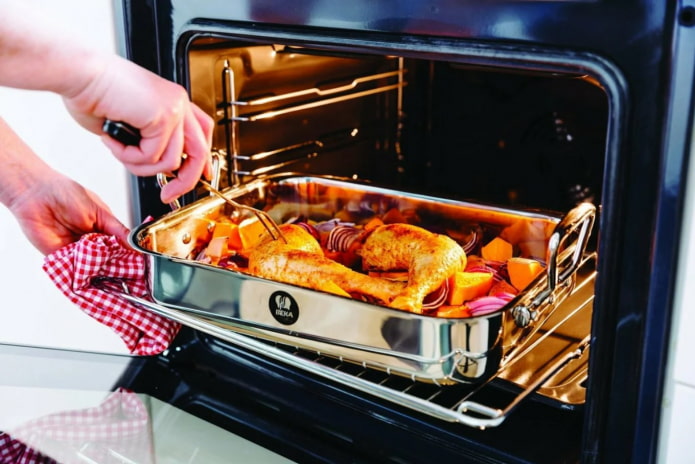
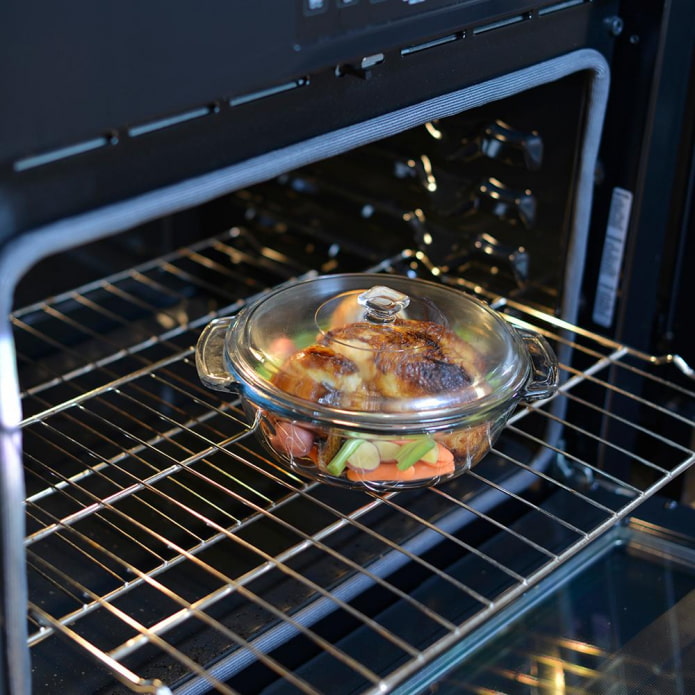
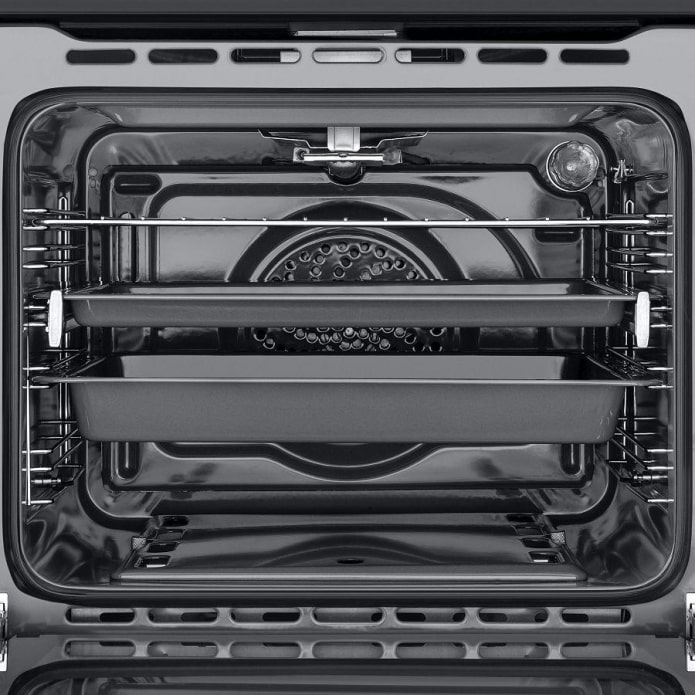
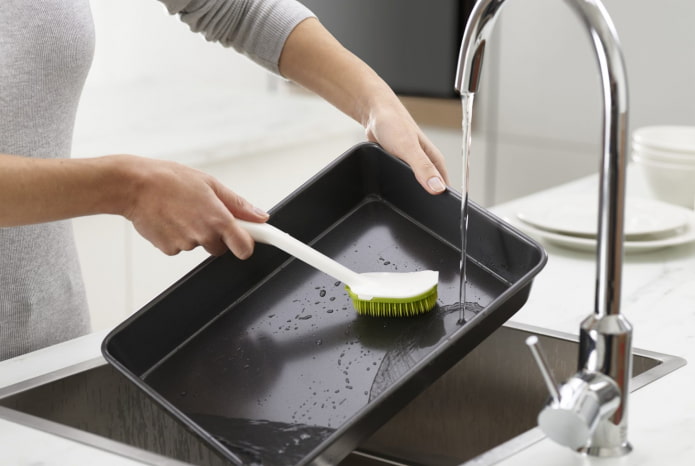
 How to choose the color of your kitchen sink?
How to choose the color of your kitchen sink? White kitchen set: features of choice, combination, 70 photos in the interior
White kitchen set: features of choice, combination, 70 photos in the interior Black set in the interior in the kitchen: design, choice of wallpaper, 90 photos
Black set in the interior in the kitchen: design, choice of wallpaper, 90 photos How to choose curtains for the kitchen and not regret it? - we understand all the nuances
How to choose curtains for the kitchen and not regret it? - we understand all the nuances Design of a white kitchen with a black countertop: 80 best ideas, photos in the interior
Design of a white kitchen with a black countertop: 80 best ideas, photos in the interior Kitchen design with green wallpaper: 55 modern photos in the interior
Kitchen design with green wallpaper: 55 modern photos in the interior